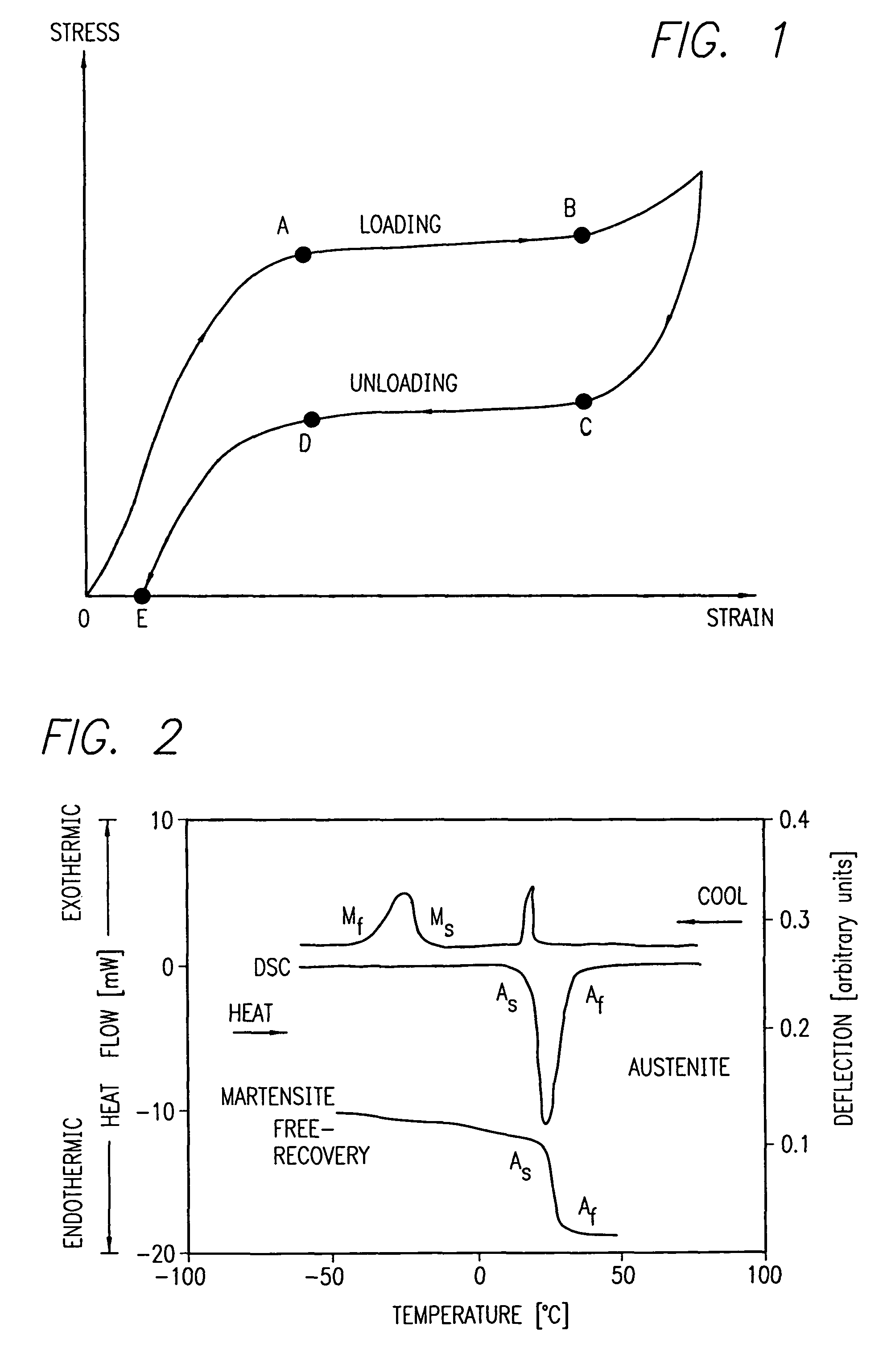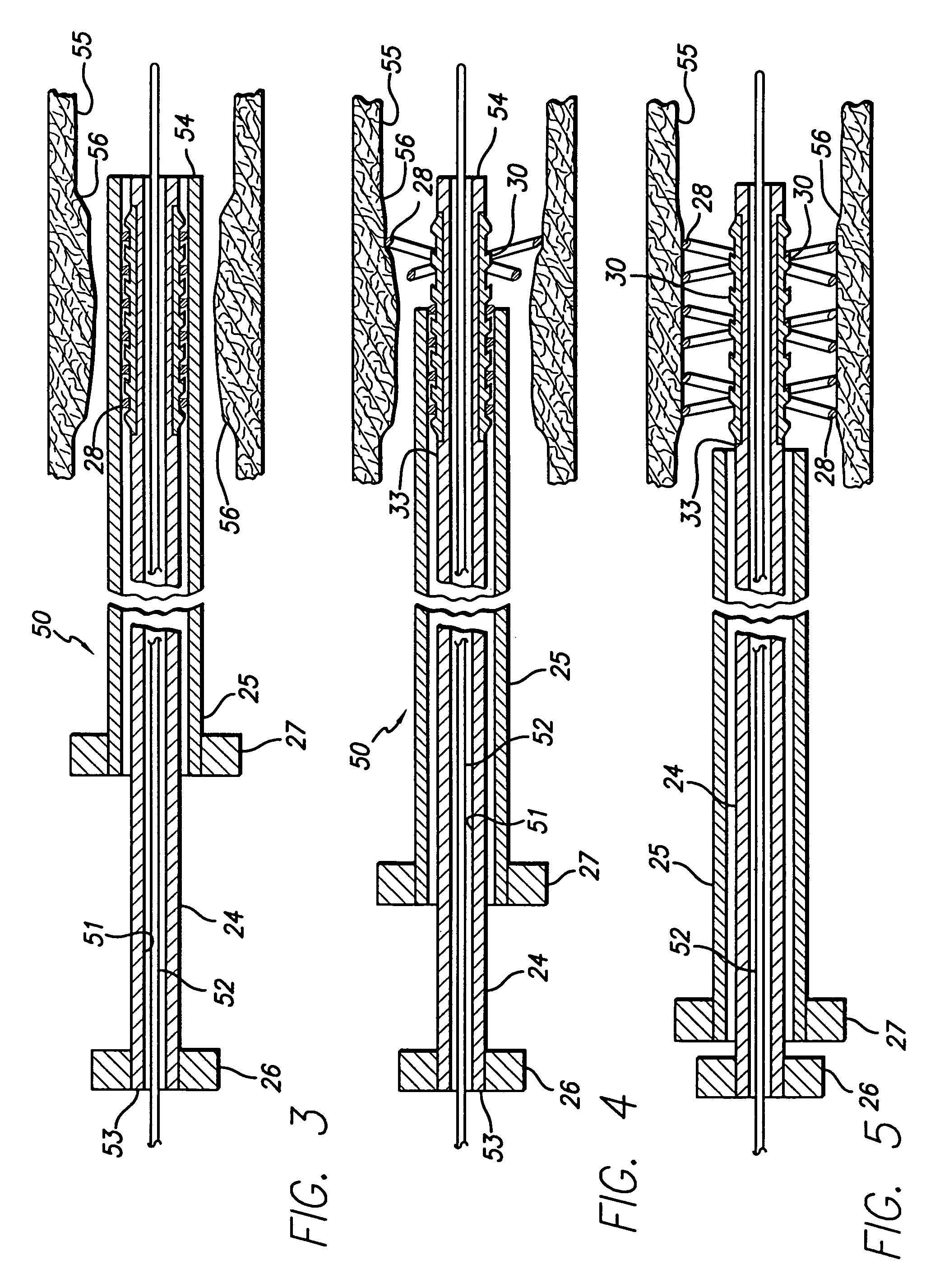Avoiding stress-induced martensitic transformation in nickel titanium alloys used in medical devices
a nickel titanium alloy and martensite technology, applied in the field ofnickeltitanium (niti) alloys, can solve the problems of difficult to accurately control the temperature of martensite transformation, difficult to achieve the effect of avoiding stress-induced martensite transformation, and avoiding temperature set-off of several tens of degrees celsius
- Summary
- Abstract
- Description
- Claims
- Application Information
AI Technical Summary
Benefits of technology
Problems solved by technology
Method used
Image
Examples
Embodiment Construction
[0033]The present invention is directed to a process for avoiding formation of stress-induced martensite in nickel-titanium alloys used in medical devices and an apparatus incorporating the steps from this process to deform a device for use in the mammalian body. For illustration purposes, the following exemplary embodiments are limited to intraluminal stents. However, it is recognized that the present invention is not limited to such applications and rather may be used in various other medical devices (e.g., guide wires) where the same principles are applicable.
[0034]As shown in FIG. 1 is a stress-strain hysteresis curve for a binary nickel-titanium alloy demonstrating the loading and unloading of the metal alloy. A more detailed discussion of nickel-titanium behavior may be found in T. W. Duerig, A. R. Pelton, “Ti—Ni Shape Memory Alloys, Materials Properties Handbook Titanium Alloys,” pp. 1035-1048, ASM International (1994), the contents of which are incorporated herein by referen...
PUM
| Property | Measurement | Unit |
|---|---|---|
| room temperature | aaaaa | aaaaa |
| diameter | aaaaa | aaaaa |
| circumference | aaaaa | aaaaa |
Abstract
Description
Claims
Application Information
 Login to View More
Login to View More - R&D
- Intellectual Property
- Life Sciences
- Materials
- Tech Scout
- Unparalleled Data Quality
- Higher Quality Content
- 60% Fewer Hallucinations
Browse by: Latest US Patents, China's latest patents, Technical Efficacy Thesaurus, Application Domain, Technology Topic, Popular Technical Reports.
© 2025 PatSnap. All rights reserved.Legal|Privacy policy|Modern Slavery Act Transparency Statement|Sitemap|About US| Contact US: help@patsnap.com



